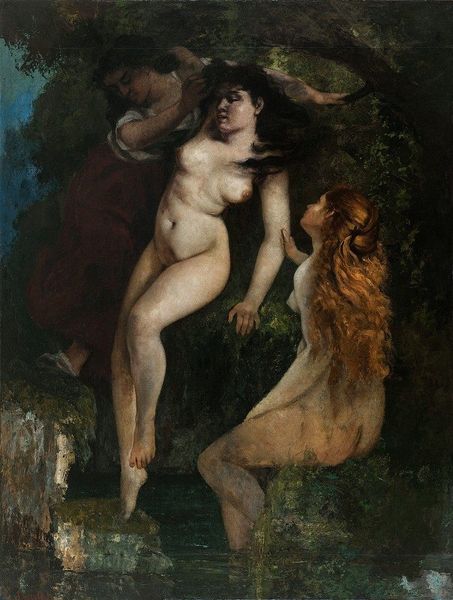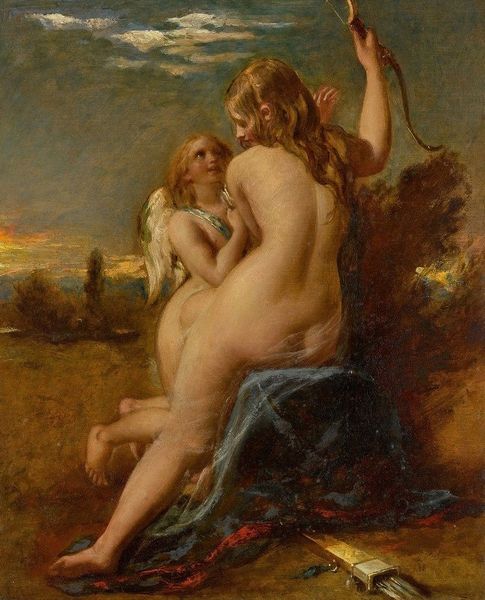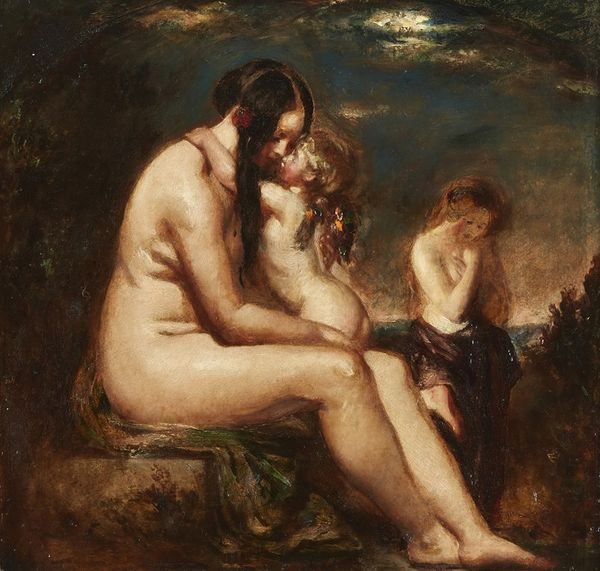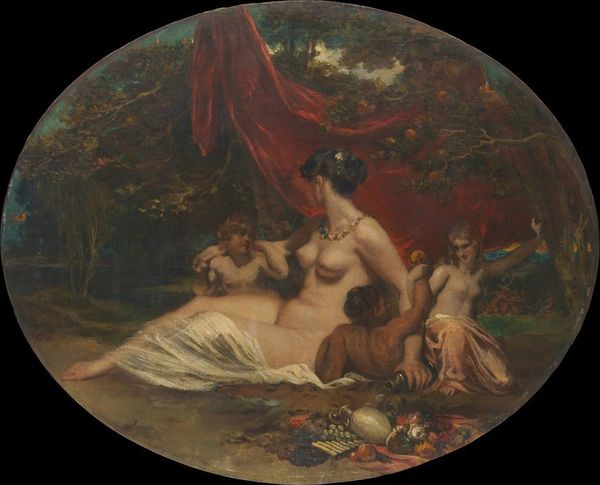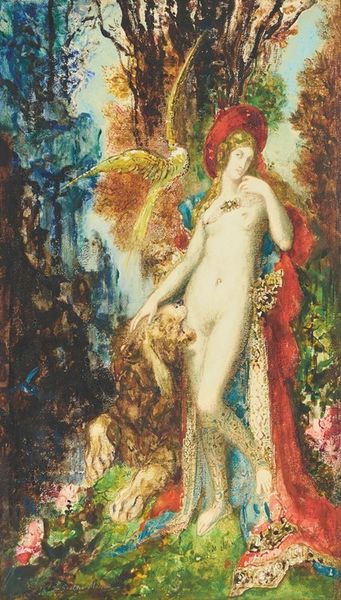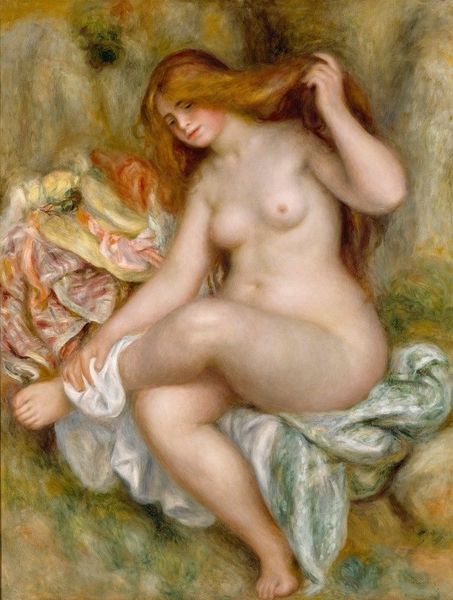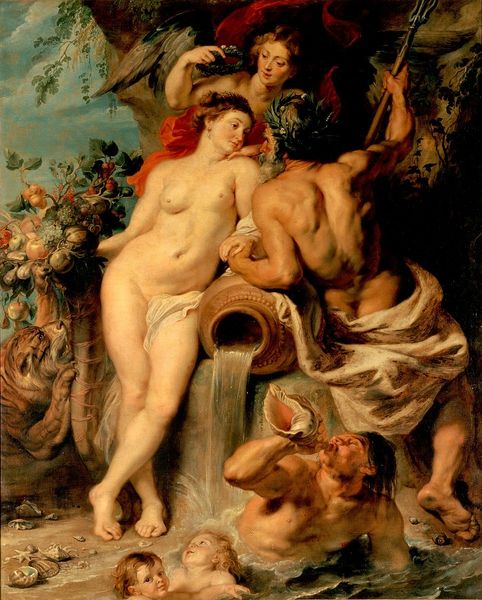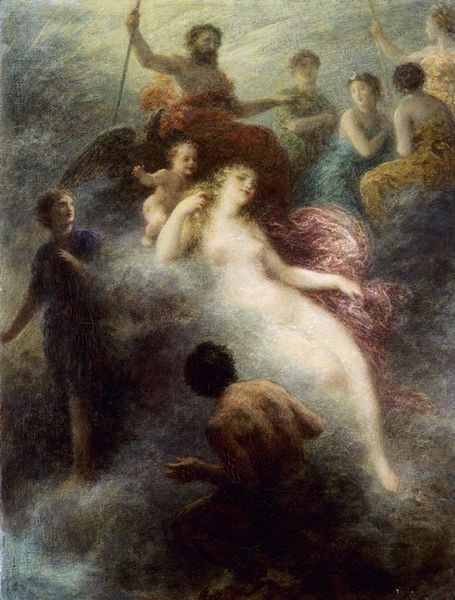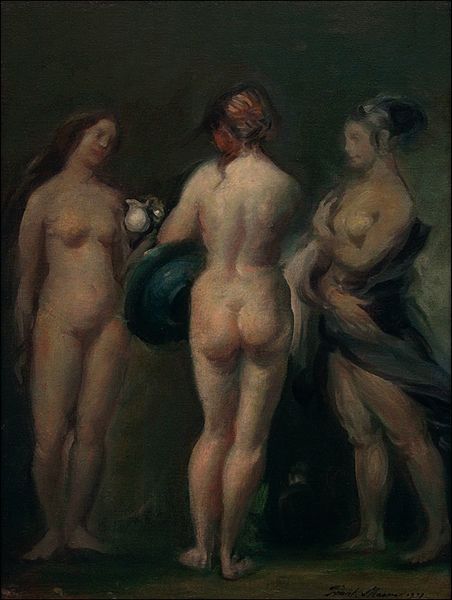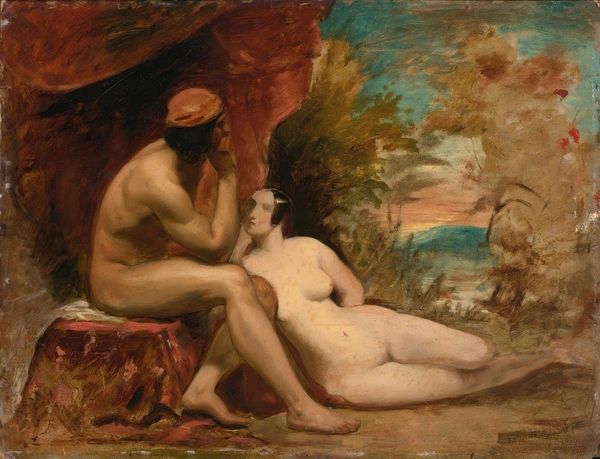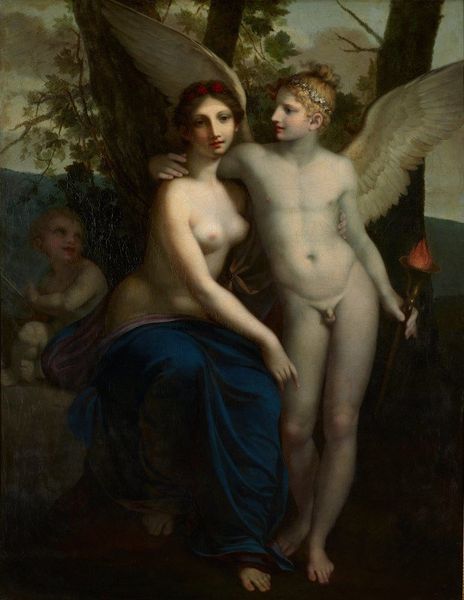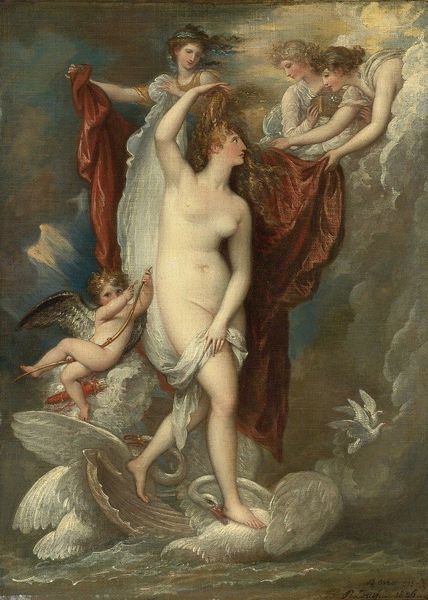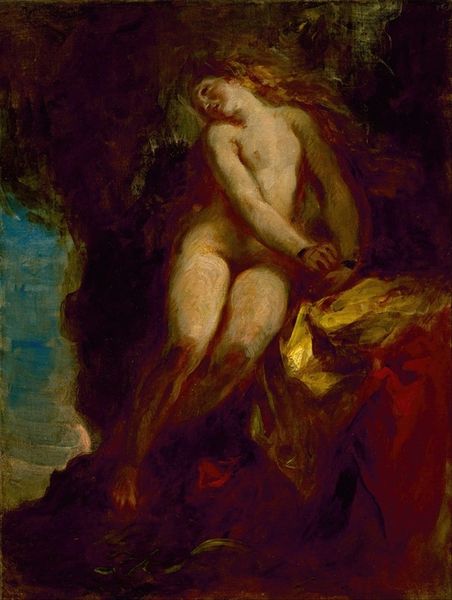
painting, oil-paint
#
allegory
#
painting
#
oil-paint
#
figuration
#
oil painting
#
group-portraits
#
romanticism
#
mythology
#
history-painting
#
nude
Copyright: Public Domain: Artvee
Editor: Here we have William Etty's "The Three Graces," painted around 1830, using oil paint. There’s something really striking about how he renders the figures, but what I find most compelling are the draped fabrics. What strikes you when you look at it? Curator: I immediately notice the stark contrast Etty establishes between the smooth, idealized flesh and the almost carelessly applied paint in the drapery. Romanticism favored expression and emotion over precise detail, so this feels intentional. What does that contrast say about Victorian ideals and the consumption of art? Were these women seen as commodities? Editor: That's an interesting point! So you're suggesting the materiality of the painting itself reflects how women might have been objectified at the time? Curator: Precisely. Etty's artistic process – his deliberate brushstrokes and use of costly pigments –becomes a comment on value. Consider, too, the role of the patron commissioning such a piece. Who would own this, and what does its presence signify about power, ownership, and the male gaze? Editor: I see what you mean. It's not just a depiction of beauty; it’s about who gets to possess and define beauty. Curator: And what materials were available, how were they traded? Where were the pigments sourced and what's *their* colonial history, I wonder. All these inform how we can interpret the work today. Editor: That definitely gives me a lot to think about regarding the creation and reception of art! Curator: Indeed! Examining art through the lens of its materials and context really deepens our understanding of its meaning and impact.
Comments
No comments
Be the first to comment and join the conversation on the ultimate creative platform.
